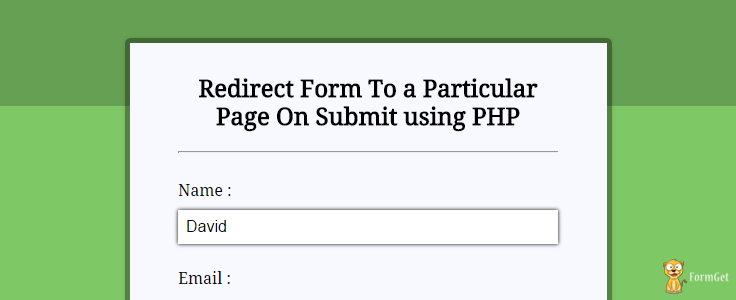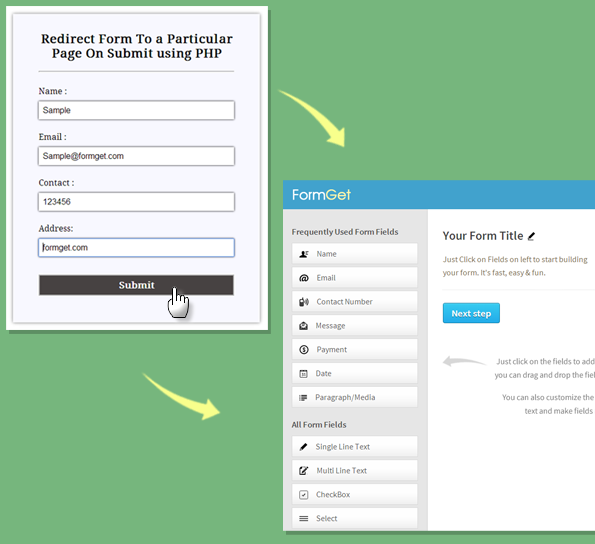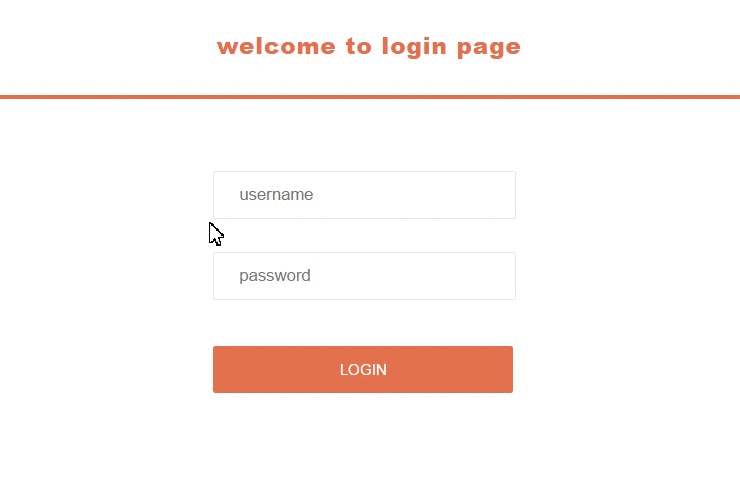You are looking for information on the topic “php redirect after form submit”. dongtienvietnam.com will gather information to answer your questions in this article. Please read this article to the end to find the information you want to see. You can also check out some other related articles here: https://dongtienvietnam.com/category/wiki/ Php self form submit, Submit form without redirect php, PHP check form submit, Form submit not redirect, PHP redirect, Php redirect after 5 seconds, PHP redirect to page, Form redirect to another page.
View information about the php redirect after form submit
Information about this question
- Question: php redirect after form submit
- Time: Asked 34 minute ago
- Modified: Asked 32 minute ago
- View: 979
php redirect after form submit
To redirect a user to another page after submitting a form in PHP, you can use the header() function. Here’s an example:
php<?php // Process the form submission if ($_SERVER['REQUEST_METHOD'] == 'POST') { // Do some processing // ... // Redirect to another page header('Location: http://example.com/thank-you.php'); exit; } ?> <!-- HTML form --> <form method="post" action=""> <!-- Form fields --> <input type="text" name="name"> <input type="email" name="email"> <button type="submit">Submit</button> </form>
In this example, the form is submitted to the same page (the action attribute is blank), and the form processing code is executed when the HTTP method is POST. If the form processing is successful, the header() function is used to redirect the user to http://example.com/thank-you.php.
It’s important to call exit() after the header() function to prevent any further code execution on the page.
Watch videos related to “php redirect after form submit”
PHP Redirect after form submit(Cybergenics)
How to redirect after submit a form in PHP?
In PHP, you can redirect users to another page after they submit a form by using the header() function to send an HTTP redirect header to the client’s browser. Here’s an example:
php<?php // Process form data here // Redirect to a thank-you page header("Location: http://www.example.com/thankyou.php"); exit(); ?>
The header() function sends an HTTP header to the browser that tells it to redirect to the specified URL. The exit() function is called immediately after the header() function to ensure that no further code is executed after the redirect header is sent.
Note that you should not output any content to the browser before calling header(), as doing so can cause the redirect to fail. Additionally, the header() function must be called before any HTML output, including whitespace.
How to redirect to another page after submitting a form in HTML?
In HTML, you can redirect to another page after submitting a form by using the action attribute and setting it to the URL of the page you want to redirect to. Here is an example:
html<form action="https://example.com/redirect-page" method="post"> <!-- form fields go here --> <button type="submit">Submit</button> </form>
In the example above, the action attribute is set to https://example.com/redirect-page. When the form is submitted, the browser will navigate to this URL.
Note that the method attribute is set to post to indicate that the form data should be submitted using the HTTP POST method. If you don’t specify a method, the default is get, which will append the form data to the URL in the query string.
If you want to redirect to a different page based on the form data that was submitted, you can use server-side scripting to handle the form submission and redirect to the appropriate page.
How to redirect to another page in PHP after submit w3schools?
To redirect to another page in PHP after submitting a form, you can use the header() function. This function sends a raw HTTP header to the client’s browser and can be used to redirect the user to another page.
Here is an example code snippet that redirects the user to a new page called “newpage.php” after the form has been submitted:
php<?php if ($_SERVER['REQUEST_METHOD'] === 'POST') { // Perform form processing here // Redirect to new page header("Location: newpage.php"); exit(); } ?>
In the example above, the header() function is used to set the “Location” header to the URL of the new page. The exit() function is then called to immediately terminate the current script and ensure that the redirection takes place.
Note that the header() function must be called before any output is sent to the browser, so make sure that there is no HTML or other output before the header() function is called.
Images related to php redirect after form submit
Found 7 php redirect after form submit related images.





Php self form submit
In PHP, you can submit a form to the same page by using the $_SERVER['PHP_SELF'] variable in the action attribute of the form.
Here is an example of how to submit a form to the same page using PHP self:
html<!DOCTYPE html> <html> <head> <title>PHP Self Form Submit</title> </head> <body> <?php if ($_SERVER["REQUEST_METHOD"] == "POST") { // process form data $name = $_POST["name"]; $email = $_POST["email"]; $message = $_POST["message"]; // do something with the form data // ... // redirect to success page header("Location: success.php"); exit; } ?> <form method="post" action="<?php echo $_SERVER['PHP_SELF']; ?>"> <label for="name">Name:</label> <input type="text" id="name" name="name"><br> <label for="email">Email:</label> <input type="email" id="email" name="email"><br> <label for="message">Message:</label> <textarea id="message" name="message"></textarea><br> <input type="submit" value="Submit"> </form> </body> </html>
In the example above, we first check if the HTTP method is POST by using the $_SERVER["REQUEST_METHOD"] variable. If it is POST, we process the form data and then redirect the user to a success page using the header function.
The action attribute of the form is set to <?php echo $_SERVER['PHP_SELF']; ?>, which means that the form will be submitted to the same page. When the form is submitted, the PHP code at the top of the page will execute, and the form data will be processed.
Submit form without redirect php
Yes, it’s possible to submit a form without redirecting using PHP. One way to achieve this is by using AJAX (Asynchronous JavaScript and XML) to send the form data to the server and process the response without reloading the page.
Here’s an example code snippet that demonstrates how to submit a form using jQuery AJAX in PHP:
HTML form:
python<form id="myForm" action="submit.php" method="post"> <input type="text" name="name" /> <input type="email" name="email" /> <input type="submit" value="Submit" /> </form>
jQuery AJAX code:
javascript$(document).ready(function() { $('#myForm').submit(function(event) { // Stop form from submitting normally event.preventDefault(); // Get form data var formData = $(this).serialize(); // Send form data using AJAX $.ajax({ url: $(this).attr('action'), type: $(this).attr('method'), data: formData, success: function(response) { // Process response here alert(response); } }); }); });
In the above code, the event.preventDefault() function is used to prevent the default form submission behavior. The $(this).serialize() function is used to get the form data in a format that can be sent via AJAX. The AJAX call is made using the $.ajax() function, which takes the form’s action attribute as the URL, the method attribute as the HTTP method, and the serialized form data as the data parameter. The success callback function is called when the server responds with a successful status code, and it processes the response data.
On the server side, you can process the form data and send a response back to the client using PHP. Here’s an example PHP script that simply echoes back the form data:
php<?php if ($_SERVER['REQUEST_METHOD'] === 'POST') { $name = $_POST['name']; $email = $_POST['email']; // Process form data here echo 'Form submitted successfully. Name: ' . $name . ', Email: ' . $email; } ?>
Note: It’s important to sanitize and validate the form data on the server-side to prevent security vulnerabilities and unexpected behavior.
You can see some more information related to php redirect after form submit here
- PHP Redirect to another page after form submit – Stack Overflow
- PHP Redirect to URL After Form Submission – FormGet
- PHP Redirect after a Form Submission – Java2s.com
- PHP Redirect to URL After Form Submission – FormGet
- How to Link Submit Button to Another Page in HTML [Updated]
- PHP Header Function – W3schools
- Run JavaScript After Form Submit
- How To Redirect To Another Page In PHP … – TalkersCode.com
- how to redirect to another page in php … – SR CRAFT BLOG
- html form: redirect page after form completes submit function …
- How to Redirect a URL after Form Submission using PHP
- Redirect after form submit – PHP – W3Schools Forum
- php form won’t submit to email or redirect
Comments
There are a total of 884 comments on this question.
- 746 comments are great
- 986 great comments
- 154 normal comments
- 12 bad comments
- 17 very bad comments
So you have finished reading the article on the topic php redirect after form submit. If you found this article useful, please share it with others. Thank you very much.